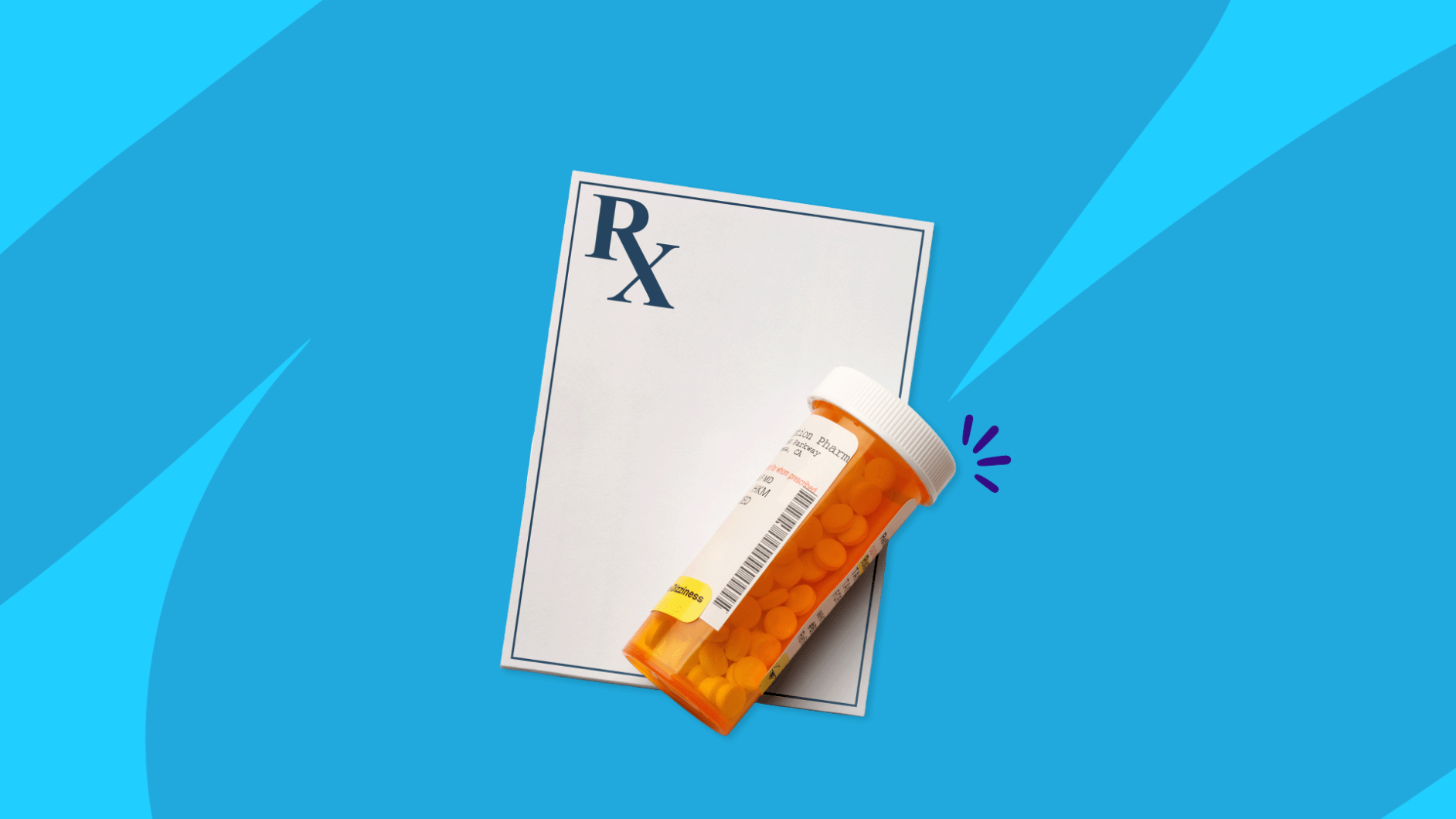Propranolol (generic Inderal) is a prescription drug that is approved by the U.S. Food and Drug Administration (FDA) to treat or prevent a number of conditions, most of which are related to the heart. Before taking this medication, patients should be aware of propranolol side effects, warnings, and interactions. Learn how to avoid these side effects below.
What is propranolol?
Propranolol is a generic medication also sold as brand name Inderal LA, Inderal XL, InnoPran XL, and Hemangeol. It belongs to the beta-adrenergic blocking agents (or beta-blockers) drug class, which helps the heart beat easier and with less force. Propranolol is only available by prescription. Here are some of the health conditions that the FDA has approved propranolol to treat:
- Arrhythmia: An irregular heartbeat that’s too slow or too fast.
- Angina: Chest pain that occurs when blood isn’t properly flowing to the heart.
- Tremors: Involuntary and rhythmic movement of the limbs, face, vocal cords, or head.
- Hypertension: High blood pressure due to the force of blood against artery walls being too high. High blood pressure levels are anything above 140/90.
- Heart attacks: A heart attack (myocardial infarction) happens when blood flow to the heart is blocked.
- Migraine headaches: Prevention of common migraine headaches. Pheochromocytoma: A rare, usually noncancerous (benign) tumor that develops in the adrenal gland.
Propranolol may be used off-label to treat other conditions, such as anxiety and panic attacks, on a case-by-case basis. Researchers are exploring how propranolol can treat certain types of cancer.
RELATED: What is Inderal LA? | What is Propranolol?
Propranolol dosages
| Indication | Standard Dosage |
| Arrhythmia | 10 to 30 mg three or four times daily |
| Angina | Total daily doses of 80 to 320 mg given in divided doses two, three, or four times daily |
| Tremors | 40 mg twice daily with a maximum of 320 mg given in divided doses daily |
| Hypertension | 40 mg twice daily with a maximum of 640 mg given in divided doses daily |
| Heart attacks | 180 to 240 mg daily given in divided doses |
| Migraine headaches | 160 to 240 mg daily given in divided doses |
| Pheochromocytoma | 30 mg daily given in divided doses |
Common side effects of propranolol
As with any medication, there’s always the potential for side effects. Here are some common side effects of propranolol:
- Dizziness
- Lightheadedness
- Tiredness
- Nausea
- Stomach pain
- Decreased sex drive
- Diarrhea
- Constipation
Because propranolol slows down the heart rate, it may cause symptoms of a heart rate that is too slow (bradycardia) which can include chest pain, dizziness, fatigue, and fainting.
Propranolol is often prescribed for treating high blood pressure, and it may lower blood pressure too far, a condition known as hypotension. Symptoms of hypotension may include blurred vision, confusion, dizziness, fatigue, and shallow breathing.
Serious side effects of propranolol
Taking propranolol may cause severe side effects. Here are some of the severe and potentially long-term side effects to be aware of when considering or taking propranolol:
- Hallucinations
- Cold hands or feet
- Muscle weakness
- Muscle cramps
- Shortness of breath
- Memory loss
- Fluid retention
- Blood sugar changes
- Insomnia and nightmares
- Allergic reaction
- Vomiting
- Shakiness
- Weight gain
- Skin rash
Side effects of propranolol that require immediate medical attention include trouble breathing, wheezing, swelling of the hands or face, and skin rash. These symptoms may indicate an allergic reaction, which could be life-threatening.
Although rare, there are reports that propranolol can cause mood changes and depression. It can also cause memory problems because of the way it affects norepinephrine and epinephrine, which are tied to memory function. Any mood changes should be mentioned to a healthcare provider as soon as possible.
“You should stop taking propranolol if serious side effects occur, but only under the guidance of a physician, as depending upon the dose and the side effects, your physician might want you to slowly taper off propranolol,” says Reuben Elovitz, MD, the founder and CEO of Private Health Dallas. “There are potential consequences with abruptly stopping the medication depending upon the reason you were started on the medication.”
Even though taking propranolol can result in side effects, it’s still a medication that can do a lot of good. It helps the heart function, and has a positive effect on the immune system by increasing the number of T cells in the body. There will always be pros and cons to every medication, and for many people, the benefits of propranolol far outweigh the downsides.
How long do propranolol side effects last?
Side effects of propranolol can last anywhere from days to weeks. Most side effects will go away within a few days as the body adjusts to the medication. For others, this adjustment period may take longer. Side effects can get worse or better as dosages increase or decrease. Long-term side effects of propranolol are possible, but this doesn’t happen for everyone.
Propranolol warnings
Propranolol isn’t for everyone. Dr. Elovitz explains that people with the following medical conditions shouldn’t take propranolol:
- Bradycardia (abnormally slow heart rate)
- Asthma (difficulty breathing from constricted airways)
- Uncontrolled heart failure (heart not pumping well)
- Peripheral vascular disease (blocked or spasming blood vessels)
- Diabetes (disease of high blood sugar levels)
- Pheochromocytoma (tumor of adrenal gland tissue)
- Myasthenia gravis (weakened muscles disease)
- Hypotension (low blood pressure)
- Orthostatic hypotension (low blood pressure that happens when standing from sitting or lying down)
People living with hyperthyroidism (overactive thyroid), Raynaud’s disease, liver disease, kidney disease, lung disease, or heart disease should talk with their healthcare provider before taking propranolol. Having these medical conditions could cause a negative reaction to propranolol, leading to additional health complications.
Pregnancy and breastfeeding
There have been no adequate and well-controlled studies on the use of propranolol in pregnant women and it should not be taken unless the potential benefit justifies the potential risk to the fetus. Propranolol is excreted in human milk and caution should be exercised if taken by a nursing woman. Pregnant women or those who may become pregnant or who are considering breastfeeding should consult their healthcare provider before taking or abruptly discontinuing propranolol.
Age restrictions
Propranolol is sometimes used to treat medical conditions like infantile hemangioma for some children, but this doesn’t mean it’s the right drug for every child. A healthcare provider will only prescribe propranolol to a child if necessary.
Propranolol is prescribed to older adults with caution, especially for those with liver, kidney, and heart conditions. Some studies suggest that adults older than 60 with hypertension shouldn’t take propranolol, but some patients with heart failure may need it. Doctors will always prescribe propranolol on a case-by-case basis.
Long-term use of propranolol
As a beta-blocker, long-term propranolol use may prevent heart attacks and maintain healthy blood pressure levels. It’s not uncommon for someone to take beta-blockers for several years, especially following a heart attack, but doctors are beginning to question whether long-term use is necessary.
Long-term use of beta-blockers may cause common side effects to worsen. It can also mask symptoms of low blood sugar in people with diabetes, which could potentially become life-threatening. High doses of propranolol that are taken long-term can even make heart problems worse and cause irregular heart rates.
Propranolol isn’t a drug that someone can immediately stop taking, even if they experience side effects. Abruptly stopping propranolol can cause heart attacks and severe chest pain. Consulting a healthcare provider is the best way to keep this from happening.
Propranolol overdose
An overdose of propranolol can occur when someone takes more than the normal or prescribed amount. An overdose can slow down the heart rate and may make it difficult to breathe. It can also cause CNS effects such as drowsiness, dizziness, and confusion. In the event of an overdose, get immediate medical attention since the effects can be life-threatening.
RELATED: How to lower blood pressure quickly and naturally
Propranolol interactions
Just like propranolol isn’t meant to be taken by everyone, it also shouldn’t be taken with some medications. Taking propranolol with these medications could cause negative interactions:
- Alpha blockers: Prazosin
- Anticholinergics: Scopolamine
- Other high blood pressure medications: Clonidine, acebutolol, nebivolol, digoxin, metoprolol
- Other heart medications: Quinidine, digoxin, verapamil
- Steroid medications: Prednisone
- Nonsteroidal anti-inflammatory drugs (NSAIDs): Aspirin, ibuprofen
- Certain antidepressants: Fluoxetine, fluvoxamine
This list of medications is not complete. Healthcare professionals can provide a full list of drug interactions. Most vitamins and supplements are safe to take with propranolol, but some like St. John’s Wort might not be.
Aside from medications, propranolol shouldn’t be taken with alcohol. Alcohol can increase blood levels of propranolol, causing it to become unsafe. Drinking too much caffeine should also be avoided because caffeine can increase anxiety and blood pressure levels.
Propranolol vs. propranolol ER side effects
Propranolol comes in two different forms that work just a little bit differently. Regular immediate release propranolol must be taken multiple times per day to make sure it’s effective. Propranolol extended-release (ER) only needs to be taken once per day because it slowly releases propranolol hydrochloride into the body.
Propranolol ER is available to purchase in 60 mg, 80 mg, 120 mg, and 160 mg capsules. The standard dose of propranolol ER is 80 mg taken once per day, which is higher than the dose of immediate-release propranolol because it’s only taken once.
Some people like the extended-release version because they only have to worry about taking their medication once per day. However, a healthcare provider will be able to determine which version is best for someone based on their individual needs and symptoms.
The side effects of regular propranolol and propranolol extended-release are almost identical. The same warnings, precautions, and drug interactions for propranolol also stand for propranolol ER.
How to avoid propranolol side effects
The best way to avoid propranolol side effects is to follow manufacturer instructions and any instructions given by a medical professional.
Propranolol doses will depend on a patient’s age, individual symptoms, and medical history, but the standard dose is 40 mg taken twice per day. Regular immediate release propranolol tablets should be taken on an empty stomach to ensure good absorption into the body. Propranolol extended-release (ER) tablets can be taken with or without food but should always be taken consistently, either with or without food, to ensure consistent doses are absorbed by the body. Also, taking propranolol ER with food can help prevent an upset stomach. Propranolol ER should be swallowed whole and NOT be chewed or crushed or the entire dose may be absorbed too quickly. Propranolol is commonly taken once in the morning and again before bedtime, but this may change based on a healthcare provider’s recommendation.
A missed dose of propranolol can also cause side effects. Taking a missed dose soon after remembering it will help prevent side effects from occurring or worsening. However, if it’s almost time to take the next dose, then the patient should not take an additional dose to make up for the missed amount.
Propranolol should be stored at room temperature away from heat, direct sunlight, and freezing temperatures. These environmental factors could potentially change the medication and how it works. Keep drugs out of reach of children. Seek immediate medical advice if a child has accidentally taken propranolol.
If the side effects of propranolol are too severe, doctors may prescribe a different medication. Just because someone starts taking a beta-blocker like propranolol, it doesn’t mean they’ll have to take it forever. Medications like ACE inhibitors and ARBs treat some of the same conditions that beta-blockers do, and they may work better for certain people. Here are some of the most commonly prescribed ACE inhibitors and ARBs:
Frequently asked questions about propranolol
Why should you not take propranolol?
Propranolol is contraindicated and should not be taken by those who have bronchial asthma, a very slow heartbeat (sinus bradycardia), or cardiogenic shock, a serious heart condition in which the heart can’t pump enough blood to the brain and other vital organs.
Does propranolol relieve anxiety?
Although propranolol does not treat the underlying causes of anxiety, it has been prescribed off-label to treat the physical symptoms of anxiety such as rapid heartbeat, sweating, dizziness, and shaky hands or voice.
Do you gain weight on propranolol?
Weight gain can occur as a side effect of some beta-blockers, including propranolol. The weight gain is thought to be due to the body retaining more fluid than normal. Weight gain from propranolol therapy may also be attributed to a slower metabolism which means the body burns fewer calories.
Will propranolol help me sleep?
Beta-blockers, including propranolol, have been shown to cause insomnia and sleep disturbances such as vivid dreams or nightmares in some patients. Individuals who take beta-blockers can have less melatonin than normal which can lead to these sleep disturbances.
Does propranolol cause hair loss?
Beta-blockers, including propranolol, can cause hair thinning and alopecia (hair loss). It is thought that this is caused by a direct effect on hair follicles. Hair loss from beta-blockers is not permanent and hair regrows once the medication is stopped.











